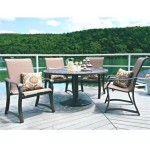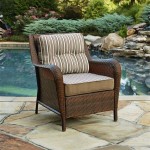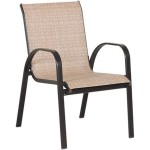White Pergola Patio Ideas: Creating a Serene Outdoor Oasis
A white pergola offers a timeless and elegant addition to any patio, transforming a simple outdoor space into a sophisticated and inviting retreat. The clean lines and bright color of a white pergola provide a versatile backdrop for various design styles, making it a popular choice for homeowners seeking to enhance their outdoor living experience. From modern minimalist aesthetics to charming rustic settings, the adaptability of a white pergola allows for seamless integration into diverse architectural and landscape designs. This article explores a range of white pergola patio ideas, focusing on key design elements, material considerations, and practical applications to help you create the perfect outdoor oasis.
Material Selection and Durability
The choice of material for a white pergola is crucial for ensuring longevity, aesthetic appeal, and minimal maintenance. Several options are available, each with its own set of advantages and disadvantages.
Wood: Wood pergolas provide a natural and warm aesthetic. Popular choices include cedar, redwood, and pressure-treated pine. Cedar and redwood are naturally resistant to decay and insects, making them suitable for outdoor use. Pressure-treated pine offers a more affordable option, but it requires regular staining or painting to protect it from the elements. White wood pergolas often require repainting or staining every few years to maintain their pristine appearance. Furthermore, wood is susceptible to warping, cracking, and rot if not properly maintained. However, the organic beauty and inherent character of wood make it a favored choice for many homeowners.
Vinyl: Vinyl pergolas are a low-maintenance alternative to wood. They are resistant to rot, insects, and fading, requiring only occasional cleaning with soap and water. Vinyl pergolas are available in various styles and designs, mimicking the look of natural wood without the associated upkeep. While vinyl is durable, it may not have the same natural appeal as wood. Additionally, vinyl can become brittle in extreme temperatures and may not be as structurally strong as wood or metal. Despite these limitations, the ease of maintenance and long lifespan of vinyl pergolas make them a practical choice for many.
Aluminum: Aluminum pergolas offer a combination of strength, durability, and low maintenance. Aluminum is resistant to rust and corrosion, making it suitable for coastal environments and areas with high humidity. Powder-coated aluminum pergolas can be painted white to achieve the desired aesthetic. Aluminum is also lightweight, making it easier to install than wood or steel. While aluminum pergolas may not have the same visual warmth as wood, their clean lines and modern appeal make them a popular choice for contemporary outdoor designs. The structural integrity of aluminum also allows for larger spans and more elaborate designs.
Composite Materials: Composite pergolas, made from a blend of wood fibers and recycled plastic, offer a balance of aesthetics and durability. These materials resist rot, insects, and fading, requiring minimal maintenance. Composite pergolas can be designed to mimic the look of natural wood, providing a realistic alternative without the associated upkeep. While composite materials may be more expensive than wood or vinyl, their long lifespan and low maintenance costs can make them a worthwhile investment. The environmental benefits of using recycled materials also appeal to eco-conscious homeowners.
When selecting a material for a white pergola, consider the climate, budget, and desired aesthetic. Wood offers natural beauty but requires regular maintenance, while vinyl and aluminum provide low-maintenance alternatives. Composite materials offer a balance of aesthetics and durability, making them a versatile choice for various applications.
Design Elements and Styling
The design of a white pergola can significantly impact the overall aesthetic of the patio. Consider the following design elements to create a cohesive and visually appealing outdoor space.
Size and Proportion: The size of the pergola should be proportionate to the size of the patio and the surrounding landscape. A pergola that is too small may look insignificant, while a pergola that is too large may overwhelm the space. Consider the intended use of the patio when determining the size of the pergola. A small pergola may be sufficient for creating a cozy seating area, while a larger pergola may be necessary for dining or entertaining. The height of the pergola should also be considered, ensuring that it provides adequate shade and clearance.
Roof Design: The roof design of the pergola can vary from simple open slats to more elaborate covered structures. Open slats provide partial shade and allow sunlight to filter through, creating a dappled effect. A solid roof provides more complete shade and protection from the elements. Consider adding retractable canopies or shade sails to adjust the amount of shade as needed. The roof design should complement the overall style of the pergola and the surrounding architecture. Arched or curved roof designs can add a touch of elegance, while flat roofs provide a more modern aesthetic.
Column Style: The style of the columns can significantly impact the overall aesthetic of the pergola. Simple square columns provide a clean and modern look, while fluted or turned columns add a touch of traditional elegance. Consider the architectural style of the house when selecting the column style. Corinthian or Doric columns can complement a classical design, while minimalist columns are suitable for modern homes. The thickness and height of the columns should also be proportionate to the size of the pergola and the surrounding landscape.
Lighting: Incorporating lighting into the pergola design can create a warm and inviting atmosphere for evening gatherings. String lights, pendant lights, and recessed lighting are all popular options. String lights can be draped across the pergola beams to create a festive ambiance, while pendant lights provide focused illumination for dining or reading. Recessed lighting can be installed in the pergola posts to provide subtle ambient lighting. Consider using LED lights, which are energy-efficient and long-lasting. The lighting design should complement the overall style of the pergola and the surrounding landscape.
Planting and Landscaping: Integrating plants and landscaping into the pergola design can enhance its natural beauty and create a sense of serenity. Climbing plants, such as wisteria, clematis, and roses, can be trained to grow up the pergola columns, providing shade and adding visual interest. Hanging baskets filled with colorful flowers can be suspended from the pergola beams, creating a vibrant display. Plantings around the base of the pergola can soften its edges and create a seamless transition between the pergola and the surrounding landscape. Consider using drought-tolerant plants to minimize water consumption. The planting and landscaping design should complement the overall style of the pergola and the surrounding architecture.
The styling of a white pergola can be further enhanced with furniture, cushions, and decorative accessories. Choose furniture that is comfortable, durable, and weather-resistant. Cushions and pillows can add pops of color and texture to the seating area. Decorative accessories, such as lanterns, planters, and outdoor rugs, can personalize the space and create a sense of warmth and character. The overall design should create a cohesive and inviting outdoor living space.
Practical Applications and Functionality
A white pergola can serve various practical functions beyond its aesthetic appeal. Consider the following applications to maximize the functionality of your pergola.
Shade and Shelter: One of the primary functions of a pergola is to provide shade and shelter from the sun. The open slat design allows sunlight to filter through, creating a dappled effect that is both visually appealing and functional. For more complete shade, consider adding a solid roof or retractable canopies. Pergolas can also provide shelter from light rain, allowing you to enjoy your patio even during inclement weather. The amount of shade and shelter provided by a pergola depends on the design of the roof and the orientation of the structure.
Privacy Screening: A pergola can be used to create a sense of privacy on your patio. Adding lattice panels or screens to the sides of the pergola can block unwanted views from neighbors or passing traffic. Climbing plants, such as vines and ivy, can also be trained to grow up the pergola columns, creating a natural privacy screen. The level of privacy provided by a pergola depends on the design of the screening and the density of the planting.
Outdoor Dining Area: A pergola can transform a patio into an inviting outdoor dining area. Placing a table and chairs under the pergola creates a comfortable and shaded space for enjoying meals with family and friends. Consider adding outdoor lighting to create a warm and inviting atmosphere for evening gatherings. A pergola can also provide shelter from light rain, allowing you to dine outdoors even during inclement weather. The size of the pergola should be proportionate to the size of the table and chairs.
Outdoor Living Room: A pergola can be used to create an outdoor living room, complete with comfortable seating, a coffee table, and outdoor rugs. Adding cushions, pillows, and blankets can create a cozy and inviting space for relaxing and entertaining. Consider adding a fire pit or outdoor fireplace to extend the use of the outdoor living room into the cooler months. The design of the outdoor living room should complement the overall style of the pergola and the surrounding landscape.
Garden Feature: A pergola can serve as a focal point in the garden, adding architectural interest and visual appeal. Climbing plants, such as wisteria and clematis, can be trained to grow up the pergola columns, creating a stunning display of color and texture. Hanging baskets filled with colorful flowers can be suspended from the pergola beams, adding a touch of whimsy. The pergola can also be used to define different areas of the garden, creating a sense of structure and organization. The design of the pergola should complement the overall style of the garden and the surrounding landscape.
The practical applications of a white pergola are numerous and varied. By considering the intended use of the patio and the surrounding landscape, you can design a pergola that is both functional and aesthetically pleasing. A well-designed pergola can transform a simple outdoor space into a versatile and inviting retreat.

Pergola Ideas Attached And Free Standing Garbrella Pergolas

15 Best Pergola Ideas For The Backyard How To Use A

White Pergola Color Goes Beyond Aesthetics Azenco Outdoor

Backyard Pergola Styles Colors Tan White Clay Vinyl Pergolas

16 Best Pergola Ideas To Transform Your Patio Yard 2024

27 Lovely Pergola Ideas From Our Design Team Yardzen

Build A Pergola Diy Houselogic

Best 25 White Pergola Ideas On Outdoor Areas Patio
50 Awesome Pergola Design Ideas Renoguide N Renovation And Inspiration

White Pergola Design Ideas
Related Posts








